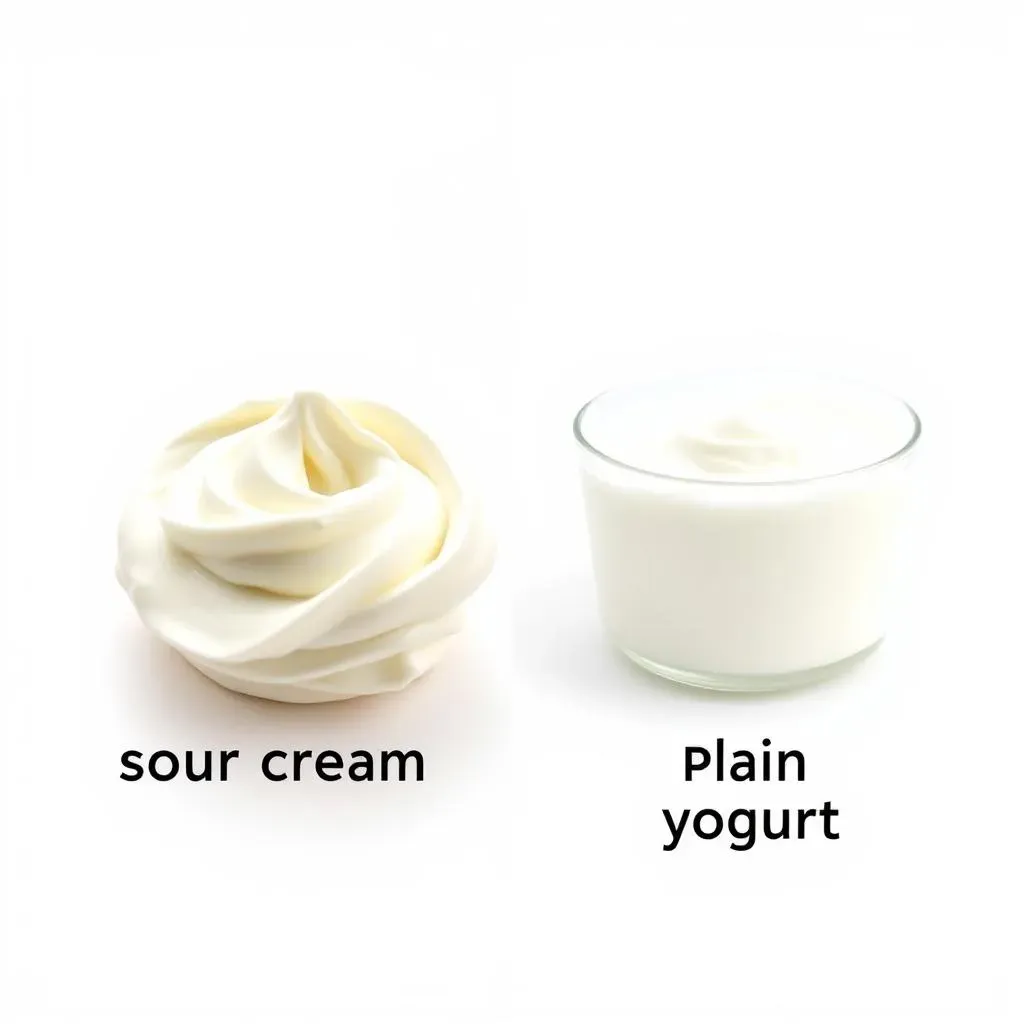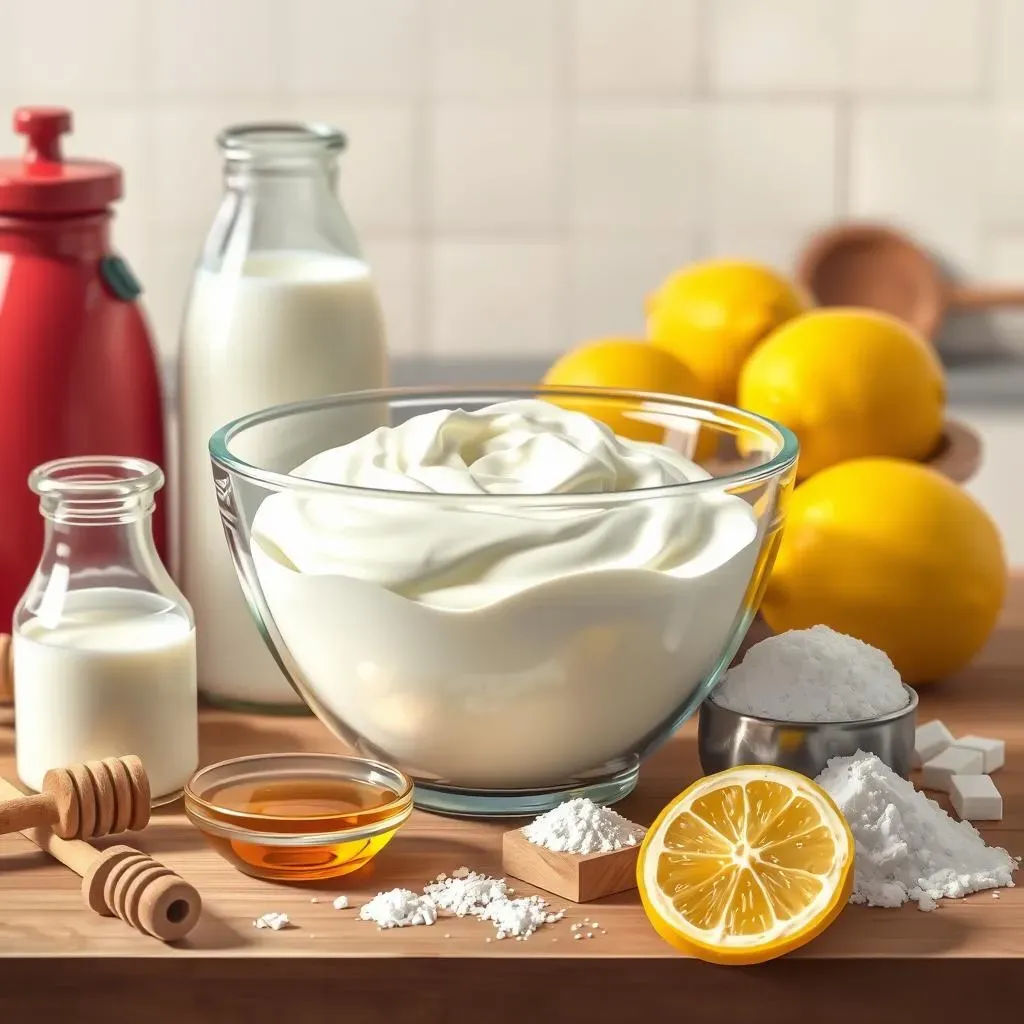Table of Contents
Ever stared blankly at a recipe, only to realize you're missing a key ingredient? Specifically, are you wondering, "Can sour cream be substituted for plain yogurt?" This question pops up more often than you might think! This article acts as your ultimate guide to navigating the tricky world of sour cream and yogurt substitutions. We'll explore the key differences between these two dairy products, delving into their textures, flavors, and fat content. You'll learn when a simple swap is perfectly acceptable and when it might lead to culinary disaster. We'll cover situations where sour cream shines as a yogurt replacement and situations where it falls flat. Finally, we'll equip you with the know-how to adjust recipes to compensate for the differences, ensuring your dishes turn out perfectly every time. Get ready to become a substitution master – let's tackle this creamy conundrum together!
Understanding the Differences: Sour Cream vs. Plain Yogurt

Understanding the Differences: Sour Cream vs. Plain Yogurt
So, you're diving into the world of sour cream and yogurt substitutions? That's awesome! Let's get clear on the basics first. Sour cream and yogurt, while both dairy products, are quite different. Think of it like this: sour cream is a thick, tangy cream, while yogurt can range from thin and watery to thick and creamy, depending on the type. Sour cream's tang comes from a specific bacterial culture, giving it a distinctly sharper flavor than most yogurts. Yogurt, on the other hand, can have a milder, sometimes sweeter taste, depending on the added ingredients. Fat content is another major difference. Sour cream is typically higher in fat, resulting in a richer, creamier texture. This higher fat content also affects how it behaves when heated – it's less likely to curdle than low-fat yogurt. Need to substitute sour cream in something? Check out our guide on using sour cream in mashed potatoes!
Feature | Sour Cream | Plain Yogurt |
|---|---|---|
Texture | Thick, creamy | Varies (thin to thick) |
Taste | Tangy, sharp | Milder, can be sweet |
Fat Content | High | Varies (low to high) |
Heat Stability | Good | Poor (low-fat varieties) |
Now, let's say you're baking a cake and the recipe calls for yogurt. Swapping in sour cream might change the texture and taste significantly. The extra fat in sour cream could make your cake denser, and the sharper flavor might clash with other ingredients. For instance, if you're using sour cream as a substitute for cream cheese in frosting, be aware of the potential changes in taste and texture.
- Consider the recipe's other ingredients.
- Think about the desired texture and taste.
- Always start with a small test batch.
Understanding these differences is crucial for making informed substitutions. Next, we'll explore specific scenarios where sour cream can successfully stand in for yogurt and when it's best to stick with the original ingredient. Remember, experimenting is key! Don’t be afraid to try different substitutions and adjust your recipes until you find what works best for you. And if you're looking for more tips on substitutions, you might find our guide on substituting sour cream for buttermilk helpful!
Successful Swaps: When Sour Cream Works as a Yogurt Substitute

Successful Swaps: When Sour Cream Works as a Yogurt Substitute
Dips and Dressings: A Sour Cream Triumph
Let's talk dips! Sour cream's thick, creamy texture and tangy flavor make it a natural for dips like French onion dip or creamy spinach artichoke dip. In these cases, swapping in plain yogurt, even Greek yogurt, often results in a thinner, less flavorful dip. The higher fat content of sour cream creates a richer mouthfeel that's hard to replicate. Plus, the tang of sour cream perfectly complements the savory flavors in many dips. Want to know more about sour cream substitutes? Check out our guide on using Greek yogurt instead of sour cream!
- French Onion Dip
- Spinach Artichoke Dip
- Ranch Dressing
Savory Dishes: A Surprisingly Good Swap
Believe it or not, sour cream can sometimes work wonders in savory dishes where yogurt might be called for. Think creamy tomato soup or a potato gratin. The richness of sour cream adds a luxurious depth of flavor that can elevate these dishes. While the tang might be slightly more pronounced, it often complements the other savory elements. However, you might need to adjust the liquid in the recipe slightly, as sour cream is denser than yogurt. For instance, if you're substituting sour cream into a recipe that typically uses buttermilk, check our article on sour cream as a buttermilk replacement.
Dish | Sour Cream Effect | Yogurt Effect |
|---|---|---|
Creamy Tomato Soup | Richer, creamier | Thinner, less creamy |
Potato Gratin | Creamier, more flavorful | Lighter, less rich |
Baking Caution: Proceed with Care!
While sour cream can work in some savory applications, baking is a different story. The higher fat content and sharper tang of sour cream can significantly alter the texture and flavor of baked goods. Cakes and muffins might become denser and more intensely flavored, which isn't always desirable. However, some recipes, like certain types of quick breads or even frostings, can tolerate the substitution relatively well. Ultimately, always proceed with caution and perhaps start with a smaller test batch before committing to a full recipe. For more comprehensive guidance, see our complete guide on substituting yogurt for sour cream in baking.
Recipe Adjustments: Making the Substitution Seamless

Recipe Adjustments: Making the Substitution Seamless
Adjusting Liquid Content
Since sour cream is thicker and richer than most yogurts, you'll often need to adjust the liquid content in your recipe. Think of it like this: sour cream adds more volume and richness. If you directly swap it for yogurt, your dish might be too thick or dry. To compensate, you might need to add a little extra milk, broth, or even water to thin things out. Start by adding a small amount and mixing well; you can always add more, but you can't take it away! The key is to achieve the desired consistency. Need help with another dairy swap? Check out our guide on sour cream in mashed potatoes.
- Start with a small amount of added liquid.
- Mix thoroughly before adding more.
- Aim for the desired consistency.
Balancing Flavors
Sour cream's tangier flavor profile can significantly impact the overall taste of your dish. If your recipe calls for a milder yogurt, the sour cream might make it too sharp. To counteract this, you can add a pinch of sugar, a touch of honey, or even a squeeze of lemon juice (yes, really!). These additions can help balance the acidity and create a more harmonious flavor profile. If you're looking for more sour cream alternatives, explore our guide on using Greek yogurt instead.
Flavor Adjustment | When to Use |
|---|---|
Sugar | To balance sourness in sweet dishes |
Honey | For a subtle sweetness and depth |
Lemon Juice | To brighten and enhance savory flavors |